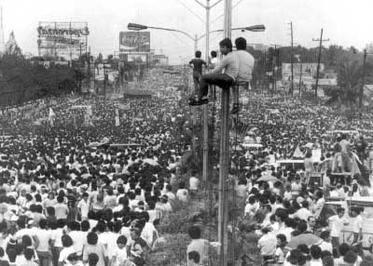The EDSA Revolution, also known as the People Power Revolution, took place in the Philippines from February 22 to 25, 1986. The revolution was a peaceful, nonviolent protest that led to the overthrow of President Ferdinand Marcos, who had been in power for over 20 years.
The revolution was sparked by the disputed results of the snap presidential election held on February 7, 1986. The opposition candidate, Corazon Aquino, had been leading in the polls, but the official results declared Marcos the winner. The results were widely seen as fraudulent, and many Filipinos believed that Aquino had been robbed of the presidency.
In response, thousands of people took to the streets to protest the election results and demand Marcos's resignation. The protests were organized by a broad coalition of groups, including the Catholic Church, labor unions, student organizations, and business groups.
The protests grew in size and intensity, and on February 22, a group of military officers led by Defense Minister Juan Ponce Enrile and General Fidel Ramos announced that they were withdrawing their support for Marcos and taking control of key government installations. They set up a command post at Camp Crame, a military base in Quezon City.
The news of the military defections and the protests spread quickly, and crowds of people began to converge on EDSA, a major thoroughfare in Manila, to show their support for the military and demand Marcos's resignation.
Over the next three days, the protests continued to grow, and Marcos ordered his troops to crush the rebellion. However, the soldiers refused to fire on the protesters, and the crowds remained peaceful.
On February 25, Marcos fled the presidential palace and was flown to Hawaii, where he lived in exile until his death in 1989. Aquino was sworn in as president, and the Philippines transitioned to a democratic government.
The EDSA Revolution was a historic event in the Philippines, and is considered a shining example of peaceful, nonviolent protest. It inspired similar movements throughout the world, and is remembered as a turning point in Philippine history.







No comments:
Post a Comment
Note: Only a member of this blog may post a comment.